

|
|
Tempo: Volume One (TV)
R2 - United Kingdom - Network Review written by and copyright: Paul Lewis (7th February 2013). |
|
The Film
 Tempo, Volume One (ABC, 1961-8)  Arts programming on television has a long history, stretching back to 1936 when the artist John Piper would host televised discussions of artworks. The ‘profile format’ (in which the programme makers focus on a single figure from the world of art and examine their work in-depth, offering a profile of that artist), sometimes also referred to as the ‘illustrated talk’, is one of the most recognisable forms associated with art programming on British television, and it originated in the 1950s with John Read’s profile of Henry Moore (see Sexton, 2007: 90). Often these profiles would be shot on film, to allow the programme makers to follow the artist on location, at a time when television programmes were being increasingly recorded on videotape. According to John Wyver, the profile format also featured a fairly fixed structure: ‘an explanatory commentary; a focus on already established artists; and a conception of the artist as visionary “genius”, who is able to transcend the society that encases her or him’ (Wyver, cited in ibid.). Arts programming on television has a long history, stretching back to 1936 when the artist John Piper would host televised discussions of artworks. The ‘profile format’ (in which the programme makers focus on a single figure from the world of art and examine their work in-depth, offering a profile of that artist), sometimes also referred to as the ‘illustrated talk’, is one of the most recognisable forms associated with art programming on British television, and it originated in the 1950s with John Read’s profile of Henry Moore (see Sexton, 2007: 90). Often these profiles would be shot on film, to allow the programme makers to follow the artist on location, at a time when television programmes were being increasingly recorded on videotape. According to John Wyver, the profile format also featured a fairly fixed structure: ‘an explanatory commentary; a focus on already established artists; and a conception of the artist as visionary “genius”, who is able to transcend the society that encases her or him’ (Wyver, cited in ibid.).
This profile format dominated the BBC’s major arts programme Monitor (1958-65); each episode of Monitor tended to provide an overview of three subjects, and many of these were conventional profile features (see ibid.). Andrew Goodwin notes that by its 100th episode in 1962, ‘Monitor had not entirely outgrown its origins in the illustrated talk, often relying exclusively on the testimony of an actual artist who came in to the studio to interviewed about her/his work; alternatively a critic would be employed to guide the viewer through the work of a dead or otherwise unavailable painter or poet’ (1990: 81). Monitor consolidated the techniques of arts programming: a major convention of this genre was (and remains) the ‘profile/biography of an artist presented in a straightforward manner and traditional assumptions about the nature of art […] If film was used, it was usually done so to capture people in more exotic, picturesque locations than the studio’ (Sexton, op cit.: 91). However, Monitor also presented some exceptions to this rule: Ken Russell’s 1962 overview of the work of Elgar, for example, created ‘a new subgenre, the arts feature dramatization’ (Goodwin, op cit.: 81). This collection of episodes from Tempo (ABC, 1961-7), devised as ITV’s answer to Monitor, features several profiles (of Orson Welles, Jacques Tati, Danny La Rue, Harold Pinter, Yehudi Menuhin). All of these profiles follow the profile format very closely. Tempo was conceived in 1961 as ‘commercial television’s first magazine programme about the arts’, and its first series was edited by Kenneth Tynan (Walker, 1993: 51). Jamie Sexton notes that Tempo, which was broadcast on Sunday afternoons and was for several years in competition with the BBC’s Monitor, ‘followed the approach of Monitor in many ways’ and consequently ‘received negative critical reactions from reviewers who contrasted it unfavourably to Monitor’; this resulted in ‘a number of changes, including budget cuts and format modifications’ (Sexton, op cit.: 91). In 1967, this eventually led to the rebranded series New Tempo. One of the major changes in Tempo’s format took place in 1965: the hiring of Mike Hodges as the series’ producer led to an adoption of more experimental techniques. Working on ITV’s long-running current affairs show World in Action (Granada, 1963-98) had given Hodges experience of using ‘small crews and lightweight 16mm film equipment’; Hodges carried these techniques over to Tempo, ‘radically altering the style and format of the programme’ (ibid). Hodges would later go on to direct two key one-off dramas (‘Suspect’ and ‘Rumour’) for the series ITV Playhouse in 1969 and 1970, respectively, before progressing to a career directing feature films such as Get Carter (1971), Flash Gordon (1980) and A Prayer for the Dying (1987). 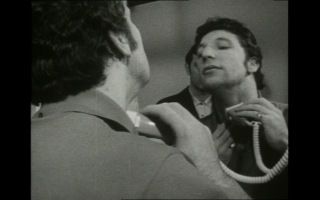 During his tenure as the producer of Tempo, Hodges introduced ‘a series of thematic Tempo programmes’: Tempo Profile, Tempo Entertainers and Tempo International. The majority of the episodes contained in this set are from this era of Tempo: the Orson Welles and Harold Pinter episodes are from the Tempo Profile strand, whilst ‘Tativille’ and ‘Jazz in Britain’ follow the Tempo International template in which Hodges attempted to find an approach to interviewing the subject that ‘in some way reflected the personality of the interviewee’ (ibid.). Consequently, in ‘Tativille’ the theme of alienation within Jacques Tati’s work is established through cutaways from interviews with Tati to bizarre sights of the huge sets built for Tati’s Playtime (1967) – we see huge skyscrapers made out of plywood and shot from the rear so that we can see how hollow they are. Furthermore, the interviews are not recorded in a studio: where the Orson Welles episode features Welles interviewed in a traditional studio setting, ‘A Guided Tour of Zero Mostel’ features Mostel interviewed on the set of Dick Lester’s A Funny Thing Happened on the Way to the Forum (1966), and ‘Tativille’ features Tati interviewed on the set of Playtime. Reflecting on Hodges’ changes to the show, Sexton has noted that ‘Tempo International marked the moment where the arts programme collided with direct cinema and current affairs’ (ibid.: 92). Elsewhere, Tempo ‘adopted the “fly on the wall” style of social documentaries’: ‘A Tale of Two Talents’, also included in this set, ‘was shot on location with a hand-held camera’ and cuts between ballet dancer Lynn Seymour and then-young pop singer Tom Jones (Walker, op cit.: 52). As Walker notes, ‘[t]he idea of comparing ballet and pop music turned out to be illuminating; it enabled the differences between a high, traditional artform and a modern, commercial artform to be highlighted’ (ibid.). During his tenure as the producer of Tempo, Hodges introduced ‘a series of thematic Tempo programmes’: Tempo Profile, Tempo Entertainers and Tempo International. The majority of the episodes contained in this set are from this era of Tempo: the Orson Welles and Harold Pinter episodes are from the Tempo Profile strand, whilst ‘Tativille’ and ‘Jazz in Britain’ follow the Tempo International template in which Hodges attempted to find an approach to interviewing the subject that ‘in some way reflected the personality of the interviewee’ (ibid.). Consequently, in ‘Tativille’ the theme of alienation within Jacques Tati’s work is established through cutaways from interviews with Tati to bizarre sights of the huge sets built for Tati’s Playtime (1967) – we see huge skyscrapers made out of plywood and shot from the rear so that we can see how hollow they are. Furthermore, the interviews are not recorded in a studio: where the Orson Welles episode features Welles interviewed in a traditional studio setting, ‘A Guided Tour of Zero Mostel’ features Mostel interviewed on the set of Dick Lester’s A Funny Thing Happened on the Way to the Forum (1966), and ‘Tativille’ features Tati interviewed on the set of Playtime. Reflecting on Hodges’ changes to the show, Sexton has noted that ‘Tempo International marked the moment where the arts programme collided with direct cinema and current affairs’ (ibid.: 92). Elsewhere, Tempo ‘adopted the “fly on the wall” style of social documentaries’: ‘A Tale of Two Talents’, also included in this set, ‘was shot on location with a hand-held camera’ and cuts between ballet dancer Lynn Seymour and then-young pop singer Tom Jones (Walker, op cit.: 52). As Walker notes, ‘[t]he idea of comparing ballet and pop music turned out to be illuminating; it enabled the differences between a high, traditional artform and a modern, commercial artform to be highlighted’ (ibid.).
Hodges has stated that where his work for ITV’s flagship current affairs series World in Action (Granada, 1963-98) was crucial for his later career in underlining the importance of thorough research, ‘Tempo was important in a different way. Being an “art”’ programme, we could be very experimental in our film making techniques. I learned a lot from the directors (Dick Fontane, Dennis Postle and James Goddard) I was able to employ on the show’ (Hodges, quoted in Williams, 2006: np). Writing about Hodges’ work with the series, Tony Williams has described Tempo’s methodology as ‘a critical and experimental journalistic approach’ (ibid.). This is perhaps most evident in the final episode included in this set, ‘Take a Simple Action and Look at It’, in which psychiatrist R D Laing reflects on various topics (phenomenological definitions of reality, consciousness, and the impact of mind-altering substances) whilst we are shown, repeatedly, a ‘simple action’: a man walks down a flight of stairs, sits at a table, pours and drinks a glass of water, and lights a cigarette. This ‘simple action’ (or, rather, series of actions) is shown from a variety of perspectives: a static high-angle shot (a ‘plan-séquence’); a series of low-angle mid shots edited together with inserts of the glass, the cigarettes, etc; a series of close-ups; and a series of more obtuse perspectives on the action recorded using a wide-angle lens that distorts the scene. Due to its subject matter, this episode proved to be controversial and, ultimately, was never aired by ITV. 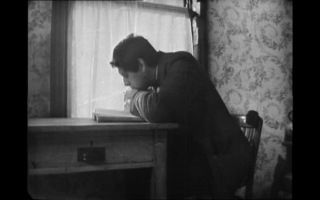 Whilst ‘Take a Simple Action’ was emblematic of the direction in which New Tempo was heading, an earlier episode features a similarly experimental approach. With ‘The Medium-Sized Cage’, the Tempo crew allowed a group of students from the Royal College of Art’s then-new Film and Television Design Department to take over production of the episode, with ‘minimal supervision’ (as we are told, onscreen). The students delivered an instalment that follows a young man, a recent graduate, as he reflects on the realities that face students when they come to the end of their studies. The young man may be taken as a metonym for his generation as he faces the economic realities of the world outside of education, reflecting on philosophy, his future, morality and his relationship with society (for example, the seductive effects of cinema and popular culture). The young man’s reflections are delivered to us via offscreen narration. Towards the end, the young man notes, ‘Somehow, somewhere you change. It’s a shock to realise. You forget ideas and ideals you once felt to be important. When you first become a student, you have an ideal. You want to show the world you’re a genius. But then you change; your values change. It’s no longer to the world you want to prove you’re a genius, but to yourself, and that’s a damn sight harder’. This episode was directed by Trevor Preston; a ‘programme associate’ on many later episodes of Tempo (including almost all of the episodes included in this set), Preston of course went on to write for major series such as Callan (ABC/Thames, 1967-72) and The Sweeney (Thames, 1974-8); he also created the series Out (Thames, 1978) and Fox (Thames, 1980), and most recently wrote Mike Hodges’ film I’ll Sleep When I’m Dead (2004). Whilst ‘Take a Simple Action’ was emblematic of the direction in which New Tempo was heading, an earlier episode features a similarly experimental approach. With ‘The Medium-Sized Cage’, the Tempo crew allowed a group of students from the Royal College of Art’s then-new Film and Television Design Department to take over production of the episode, with ‘minimal supervision’ (as we are told, onscreen). The students delivered an instalment that follows a young man, a recent graduate, as he reflects on the realities that face students when they come to the end of their studies. The young man may be taken as a metonym for his generation as he faces the economic realities of the world outside of education, reflecting on philosophy, his future, morality and his relationship with society (for example, the seductive effects of cinema and popular culture). The young man’s reflections are delivered to us via offscreen narration. Towards the end, the young man notes, ‘Somehow, somewhere you change. It’s a shock to realise. You forget ideas and ideals you once felt to be important. When you first become a student, you have an ideal. You want to show the world you’re a genius. But then you change; your values change. It’s no longer to the world you want to prove you’re a genius, but to yourself, and that’s a damn sight harder’. This episode was directed by Trevor Preston; a ‘programme associate’ on many later episodes of Tempo (including almost all of the episodes included in this set), Preston of course went on to write for major series such as Callan (ABC/Thames, 1967-72) and The Sweeney (Thames, 1974-8); he also created the series Out (Thames, 1978) and Fox (Thames, 1980), and most recently wrote Mike Hodges’ film I’ll Sleep When I’m Dead (2004).
DISC ONE: ‘Painter at Work’ (29:38) ‘The Medium-Sized Cage’ (21:10) ‘Menuhin on Music’ (20:31) ‘Harold Pinter’ (30:41)d ‘Orson Welles’ (30:45) ‘A Guided Tour of Zero Mostel’ (25:27) DISC TWO: ‘A Tale of Two Talents’ (26:27) ‘Don’t Let the Wig Fool You, Mate!’ (26:03) ‘Meet the Duke’ (25:16) ‘Tativille’ (25:25) ‘Jazz in Wonderland’ (25:35) ‘Take a Simple Action and Look at It’ (25:14)
Video
Each episode opens with the new Studiocanal logo. The episodes are all in monochrome and shot on a combination of 16mm film and videotape. There is some tape damage here and there, and the filmed footage in ‘A Guided Tour of Zero Mostel’ displays some fairly heavy wear and tear. The original break bumpers are present. The episodes are presented in their original broadcast screen ratio of 4:3.  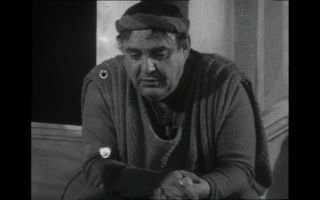 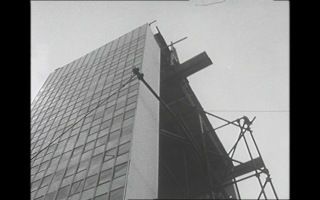
Audio
Audio for each of the episodes is presented via a two-channel mono track. This is clear but, as might be expected considering the age of the materials and the fact that many of the interviews take place in situ, shows some minor wear and tear.
Extras
Overall
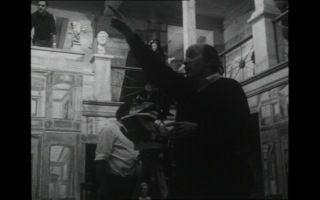 It could be said that arts programming on UK television is struggling at the moment, with the demise of ITV’s flagship arts programme The South Bank Show in 2009 signifying the end of an era (see Brown, 2009). By the end of the first decade of the 21st Century, around forty per cent of television viewers had migrated from the core terrestrial channels to non-terrestrial stations, with the result that the commercial stations have been increasingly forced, in order to maintain their audience share, to focus on ‘middle-of-the-road programming’ (ibid.). This release of selected episodes of Tempo offers insight into a very different era – an era in which fairly challenging arts programming could be scheduled on a commercial station on Sunday afternoons. What’s more, these episodes of Tempo communicate the energy and vitality of then-relatively new forms (cinema, television) and radical authors within existing forms (Pinter, Duke Ellington). The episodes in this set cover a fascinating spectrum of topics. They’re in fairly rough shape at times, but this is to be expected given their age (and rarity). This is an interesting set that, for those with an interest in any of the topics covered in the episodes, is very easy to recommend. It could be said that arts programming on UK television is struggling at the moment, with the demise of ITV’s flagship arts programme The South Bank Show in 2009 signifying the end of an era (see Brown, 2009). By the end of the first decade of the 21st Century, around forty per cent of television viewers had migrated from the core terrestrial channels to non-terrestrial stations, with the result that the commercial stations have been increasingly forced, in order to maintain their audience share, to focus on ‘middle-of-the-road programming’ (ibid.). This release of selected episodes of Tempo offers insight into a very different era – an era in which fairly challenging arts programming could be scheduled on a commercial station on Sunday afternoons. What’s more, these episodes of Tempo communicate the energy and vitality of then-relatively new forms (cinema, television) and radical authors within existing forms (Pinter, Duke Ellington). The episodes in this set cover a fascinating spectrum of topics. They’re in fairly rough shape at times, but this is to be expected given their age (and rarity). This is an interesting set that, for those with an interest in any of the topics covered in the episodes, is very easy to recommend.
References Brown, Maggie, 2009: ‘Culture on television: a lost art?’ The Guardian. [Online.] http://www.guardian.co.uk/media/2009/may/11/melvyn-bragg-south-bank-show Goodwin, Andrew, 1990: Understanding Television. London: Routledge Sexton, Jamie, 2007: ‘From art to avant-garde? Television, formalism and the arts documentary in 1960s Britain’. In: Mulvey, Laura & Sexton, Jamie (eds), 2007: Experimental British Television. Manchester University Press: 89-105 Walker, John Albert, 1993: Arts TV: A History of Arts Television in Britain. Indiana University Press Williams, Tony, 2006: ‘Mike Hodges’. Sense of Cinema. [Online.] http://sensesofcinema.com/2006/great-directors/hodges/ This release has been kindly sponsored by: 
|
|||||

|